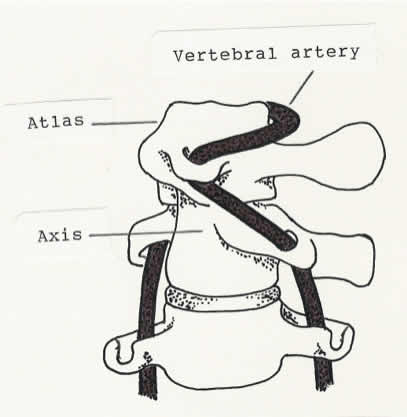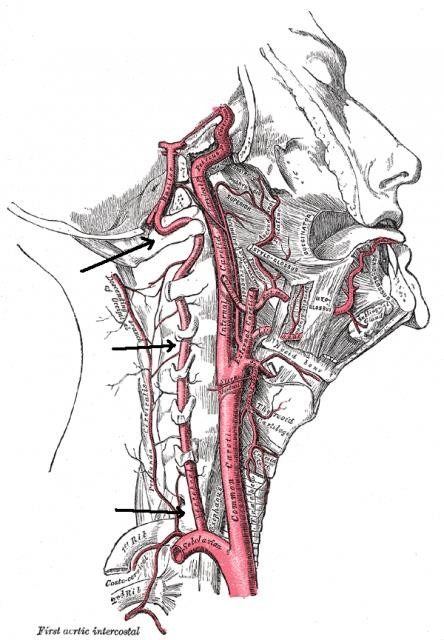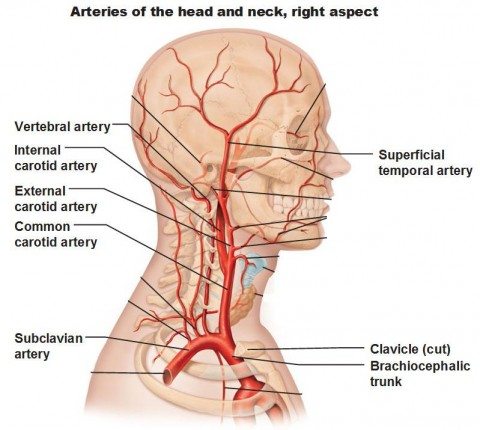Well, we’re back.
Yes, after having our WordPress database somehow borked to the point where no new posts could be added and no existing posts could be edited since Friday, Science-Based Medicine is back in business—finally! As a result, some of you might have seen this post elsewhere, as it was considered to be somewhat time-sensitive, and I didn’t want to delay, particularly given that I didn’t know how long SBM would be down. Fortunately, we’re back a bit sooner than I thought; so let’s look at something that was in the news over the weekend.
Katie May was a model, and by all accounts a very successful one, having appeared in Playboy, Sports Illustrated, and other magazines and websites. Self-proclaimed the “Queen of Snapchat,” she also had nearly two million Instagram followers and was a major social media force, having recently parlayed her modeling and social media career into entrepreneurship. She also died unexpectedly on Thursday night at the too-young age of 34, leaving behind a seven-year-old daughter. What makes May’s tragic death an appropriate topic for SBM is not so much her young age but rather the circumstances surrounding her death, particularly the cause. Basically, May died of complications due to stroke, as her family confirmed in a statement issued on Friday:
“It is with heavy hearts that we confirm the passing today of Katie May – mother, daughter, sister, friend, businesswoman, model and social media star – after suffering a catastrophic stroke caused by a blocked carotid artery on Monday,” the statement reads.
“Known as MsKatieMay on the Internet and the “Queen of Snapchat,” she leaves behind millions of fans and followers, and a heartbroken family. We respectfully ask for privacy in this this difficult time. Those wishing to contribute to the living trust being set up for the care of her young daughter may do so at her GoFundMe page.”
Given her young age, that alone makes her death curious, but what makes it discussion-worthy to me is that, having injured her neck in a fall at a photo shoot, she apparently had had two chiropractic neck adjustments before her collapse one week ago that led to her hospitalization, deterioration, and, ultimately, the decision to take her off of life support. Indeed, starting early Friday morning, people were e-mailing and Tweeting at me, some already having concluded that chiropractic killed Katie May. But did it?
Maybe. Or: It’s complicated. At least, answering that question is more complicated than just concluding that May’s adjustment caused the stroke.
Because I had decided to do something highly unusual for me and take the day off Friday in order to recover from my energy-sapping, two-week-long grant writing frenzy, I was hanging out at home when the e-mails and news reports started appearing. I almost whipped out a quick, ranty post for my not-so-secret other blog right then and there, but decided to wait for more news over the weekend and do a post, if appropriate. Doing that allowed me to construct a timeline, which leaves open the biggest question: Was it May’s neck injury or the chiropractic adjustments that caused the stroke that killed her?
Let’s dig in.
A timeline, or: Just the facts, Ma’am
In late January, Katie May was doing a photo shoot. Although the details are not clear, we do know from various sources that during that shoot she fell—hard—and apparently hit her neck on something. After the fall she complained of severe neck pain, severe enough to go to the hospital to be checked out:
Sources with direct knowledge of Katie’s situation tell us the accident happened late last week when she was shooting in Los Angeles. We’re told Katie’s neck pain after the fall was so bad, she went to a hospital to get checked out, and was released later that day.
But on Friday the pain remained — she tweeted, “Pinched a nerve in my neck on a photoshoot and got adjusted this morning. It really hurts!”
So apparently she did go back to her chiropractor on Monday, the same day she suffered her fatal stroke.
One notes that this report, as well as others, conflict with what the family said about May’s death, as reported in People:
“To the best of my family’s knowledge, and we are fairly but not totally certain of this, Katie did not seek medical care prior to Monday evening; if she had, it seems reasonable to conclude, the subsequent days would have unfolded very differently,” her brother, Stephen May, says.
It is, of course, possible that Stephen May didn’t know that his sister was checked out in the emergency room, or it is possible that she never was, although, given multiple news reports indicating that she did seek medical attention, I suspect that she probably did. I haven’t been able to find out for sure. Whatever the case with respect to seeking out standard science-based medical care, we do know that May sought out a chiropractor for neck adjustment. First, here’s her Tweet from January 29:
Pinched a nerve in my neck on a Photoshoot and got adjusted this morning. It really hurts! Any home remedy suggestions loves? XOXO
— Katie May (@Ms_katiemay) January 29, 2016
Then, on January 31 in response to a Tweet by one of her fans asking how her neck was:
Thanks love! It still hurts, going back to chiropractor tomorrow xoxoxo https://t.co/xTw080sjrK
— Katie May (@Ms_katiemay) February 1, 2016
Other than these Tweets, between the time of May’s initial injury on (probably) January 28 and the evening of her stroke (February 1), there was nothing on May’s Twitter or Instagram feeds to indicate that anything was wrong. Her last Instagram post was dated February 1 and included a photo of her in a swimsuit with a message, “️Hope everyone is having a great Monday! It’s very windy here today in LA 🌪☀️😘.” Her Twitter feed abruptly went silent after 5:19 PM PT on February 1, her last Tweet being a photo with her asking her fans to help her “win most Arsenic Girl.” Remember, it was that Monday night when she apparently collapsed and was rushed to the hospital, where she was in critical condition until she was removed from life support on Thursday and died a few hours later that evening.
Given that timeline, which is as accurate as I can currently deduce based on the news reports, the next question is: What killed Katie May? Obviously, it was a stroke. But what caused the stroke that killed her? Was it chiropractic? Was it her original trauma to the neck suffered when she fell? Was it a combination? Contrary to a lot of the speculation out there, this is not nearly as straightforward a question as it sounds at first. Let’s take a look at the two main possibilities.
Chiropractic neck adjustments and stroke
Regular readers of this blog know that chiropractic is a pseudoscientific system of “healing” founded in 1895 by Daniel David Palmer, who claimed to have restored the hearing to a deaf janitor by “adjusting” a bump on his spine. It’s based on the vitalistic concept of “innate intelligence,” whose proper flow through the nervous system is interfered with by “subluxations” in the spine. To chiropractors, the way to remove this interference is to “adjust” the spine. To Palmer, the “innate” intelligence was very much similar to the vitalistic concept of the “spark of life,” the “life force,” or, as it is frequently called in Asian cultures, qi. Of course, there are some spinal conditions for which manipulation is an effective treatment, but many chiropractors go beyond that to claim that chiropractic adjustments can treat allergies, asthma, and a wide variety of other illnesses that have nothing to do with the spine. Many chiropractors are antivaccine, as well. It’s not for nothing that I have frequently referred to chiropractors as inferior physical therapists with delusions of grandeur. If you don’t believe me, consider that there is a movement among chiropractors to win the status of primary care provider, a role they are completely unqualified for.
The issue of whether chiropractic neck adjustments can cause strokes is a question I haven’t really discussed on this blog, mainly because others here at SBM have examined several times in the past, so many times that I never really felt the need to address the question myself. This case, however, is different because it poses the question of whether what killed Katie May was a stroke due to her original trauma or a complication of chiropractic adjustments. Also, it must be pointed out that her stroke would be considered atypical for a chiropractic-induced stroke, for reasons that I will discuss shortly.
What is the relationship between chiropractic neck adjustments and stroke? Given how extensively the issue has been discussed elsewhere, I don’t feel the need to go into my usual level of extreme detail, but a brief (for me) recap is certainly appropriate. First, check out this video of a chiropractor doing neck adjustments:
If you cringe when you hear the pop during the violent twist given to the neck, you’re not alone. So do I. So how could such a motion cause a stroke? To understand that, you need to know a bit more about the anatomy of the neck. I thus refer you to this figure that I stole from one of Mark Crislip’s posts on chiropractic and stroke:

Extreme rotation of the atlas on the axis (at the atlantoaxial joint) stretches the vertebral artery. In layman’s terms, 40% of a hanging.
Basically, two very important arteries that supply blood to the brain pass through the two highest vertebrae, the atlas (C1, so named because it was thought to support the head the way the mythical Atlas held up the earth) and the axis (C2). Another illustration shows how the vertebral arteries are tethered to the spine and make a big loop around the atlas before entering the skull and joining together to form the basilar artery (click to embiggen):
It’s thus not difficult to see how a rapid rotation of the head could potentially stretch the basilar arteries. Generally, chiropractors describe this as “high velocity, low amplitude” (HVLA), which it is, but, given the constraints of vertebral artery anatomy, high amplitude is not required to cause injury. With HVLA, it is quite possible to tear the intima (the lining of the artery consisting of vascular endothelial cells). Intimal tears become “sticky” for platelets, leading them to lodge there and start to form a clot. This is the same reason atherosclerotic plaques can lead to strokes; the “rough” area of the plaque is thrombogenic; i.e., has a tendency to attract platelets and cause clots. When a clot forms in such an injured area of intima, regardless of where the artery is, one of three things can happen. It can resolve completely; it can leave a narrowed segment of the artery as it resolves; or it can break off and flow further downstream where it will lodge in a narrow section of the artery and block blood flow. When that happens in the brain, it’s called a stroke.
As much as chiropractors try (unsuccessfully) to deny it, there is a convincing correlation between chiropractic neck manipulation and vertebral artery stroke in multiple studies. The evidence has been summarized in Quackwatch. It’s been discussed by others here, including Mark Crislip, Harriet Hall, Steve Novella, and Sam Homola. Clay Jones even described a case of a six year old child who suffered a stroke after chiropractic manipulation, while Harriet Hall described the case of a 40 year old woman named Sandra Nette, who suffered a stroke after a neck adjustment, leaving her in a state very close to locked-in syndrome, leading to a landmark lawsuit.
How strong is the correlation, though? Harriet points out that estimates of neck manipulation-induced strokes range from one in ten million manipulations to one in 40,000. Not surprisingly, it’s chiropractic literature that tends to downplay the risk and come up with the lower estimates of post-manipulation strokes. It’s a difficult question to study, because the incidence of vertebral artery strokes is very low to begin with; so detecting increased risk is difficult. For instance, one study of patients under 45 found that those who had this kind of stroke were more than five times more likely to have visited a chiropractor during the preceding week than control patients. Meanwhile, studies that purport to show that neck manipulation is not associated with stroke tend to have serious flaws, as Mark Crislip likes to point out.
The link between neck manipulation and basilar artery stroke is definitely plausible on anatomic considerations. There is enough evidence that it is real as to be concerned. However, it must be conceded that such chiropractic-induced strokes are admittedly very uncommon. As has been pointed out, given how rare basilar artery strokes are in young people, even a high relative risk of such a stroke after a chiropractic intervention would still be a low risk. The problem, of course, is that the consequences of such strokes, even if they are rare, can be catastrophic. Balancing the lack of evidence that chiropractic neck manipulation is more effective for neck pain than, for example, simply gently moving the neck around, with its small risk of a catastrophic complication and the fact that most chiropractors don’t provide truly informed consent about the risks of stroke after cervical manipulation, I tend to agree with Harriet Hall that “existing evidence is inadequate to conclusively determine causality, but I think it supports a high probability of causality, and the alternate explanations [offered] to exonerate chiropractors are questionable.” Given that assessment, I find it hard to justify cervical manipulation as a treatment for, well, anything.
But what about Katie May?
So how does this evidence apply to the case of Katie May? Here’s the problem. By all news reports, Katie May didn’t suffer a vertebral artery stroke. She suffered a carotid artery stroke. While it is true that cervical manipulation very likely can cause vertebral artery strokes, it is not at all clear whether such manipulation can cause carotid artery strokes. From a simple anatomic standpoint, there is less plausibility, as well, but not zero. Let’s take a look at carotid artery anatomy (click to embiggen):
In the neck, you have two carotid arteries. More specifically, these are the common carotid arteries. Around the level of the thyroid cartilage, the common carotid artery splits into external and internal branches. The external branch supplies blood to the face and neck. The internal branch proceeds up the neck to the temporal bone, where, to put it simply, it enters a canal in the petrous portion of the temporal bone and emerges within the skull to supply the brain and other structures (such as the eye) by branching into several arteries, the end branches of which are the anterior and middle cerebral arteries. When atherosclerotic plaque builds up in this system, it most commonly builds up in the internal carotid artery just past the bifurcation of the common carotid, and that’s where vascular surgeons perform carotid endarterectomies to remove such plaques and prevent strokes.
Evidence implicating chiropractic manipulation as a cause of strokes arising from the carotid system is much thinner than the evidence for chiropractic-induced vertebral artery strokes. There have been case reports, such as one that Harriet Hall discussed in which a man who had known carotid disease, with calcified plaque, noticed left arm weakness and numbness 30 minutes after a chiropractic neck manipulation. Imaging showed a calcified embolus in the right middle cerebral artery, which was strongly suggestive that neck manipulation had loosened part of the plaque an allowed this embolus to flow into the middle cerebral artery. Other sources of embolus were systematically ruled out. Another case report described a 34-year-old, otherwise-healthy man who suffered acute left-sided numbness and loss of coordination after chiropractic neck manipulation. He was found to have bilateral carotid artery dissections and a right vertebral artery dissection. (An arterial dissection occurs when there is a tear in the innermost intimal layer, allowing the shear force of flowing blood to start to pull that layer away from the muscular layer of the artery.) Other case reports exist as well, some linking dissection to collagen-vascular disease. However, larger studies have failed to find a compelling link between carotid artery strokes and chiropractic neck manipulation.
In other words, there is more uncertainty about a link between chiropractic manipulation and stroke from carotid arteries, which makes the case for link between Katie May’s two neck manipulations and her stroke harder to argue.
Post-traumatic stroke
Another possibility is that Katie May died of post-traumatic stroke, as initial reports suggested before people noticed that she had Tweeted about undergoing neck adjustment and reports came out that she had undergone two such adjustments between injuring her neck and suffering her massive stroke. The annual incidence of spontaneous internal carotid artery dissection is around 2.5-3 per 100,000, making it pretty rare, although the true incidence of dissection is probably higher because this number doesn’t take into account injuries without neurologic symptoms. The most common initial symptoms of a dissection include neck pain and headache, the former of which May definitely had. Crissey et al. described four main mechanisms leading to carotid injury:
- Neck hyperextension associated with rotation (which May might have had from her manipulation).
- Direct blow to the neck (which May almost certainly appears to have had from her fall).
- Blunt intra-oral trauma (which May didn’t have).
- Basilar skull fracture involving the carotid canal (which May also didn’t have, at least not as far as we know).
Carotid artery dissection has also been reported after sports injuries, the sports including judo, skiing, yoga, ice hockey, rowing, wrestling, horse riding, soccer, jogging, and others—even after treadmill running. In other words, although they are rare, trivial trauma can cause carotid dissections in young, healthy people.
Once such an injury occurs, the latency period for an ischemic event (i.e., stroke) is such that 80% of strokes arise within the first seven days (which May’s did), but post-dissection strokes can still occur as long as five months later.
So what killed Katie May?
So what killed Katie May? The bottom line is that we don’t know for sure. We can’t know for sure. If you leave out the chiropractic manipulations of her neck, her clinical history—at least as far as I can ascertain it from existing news reports—is classic for a dissection due to neck trauma. She was, after all, a young person who suffered a seemingly relatively minor neck injury that, unbeknownst to her, could have caused a carotid artery dissection, leading to a stroke four or five days later. Even if May were examined in the emergency room shortly after her injury, in the absence of neurological symptoms it would have been very easy to miss the possibility of an intimal tear that ultimately could lead to a dissection. Absent focal neurological findings, there’s really nothing on physical exam that can raise the index of suspicion for a dissection, and given how rare dissections are after trauma, doing an ultrasound or angiography would have been hard to justify absent more worrisome symptoms.
Thus, it seems to be jumping to conclusions for May’s friend Christina Passanisi to say that May “really didn’t need to have her neck adjusted, and it killed her.” Don’t get me wrong. I completely agree that May didn’t need to have her neck adjusted, particularly after having suffered trauma to it. I just can’t be so sure that it was the manipulation that killed her, given that May’s history also fits with that of a traumatic carotid dissection. Even if there were an autopsy that found an internal carotid artery dissection, there would be no good way to tell whether the trauma from May’s fall or trauma from her two neck adjustments caused it.
That being said, don’t mistake my concluding that we can’t be sure that the chiropractic neck manipulation didn’t cause May’s stroke with my concluding that it didn’t cause her stroke. Her two chiropractic manipulations might well have either worsened an existing intimal tear or caused a new one that led to her demise. Or they might have had nothing to do with her stroke, her fate having been sealed days before when she fell during that photoshoot. There is just no way of knowing for sure. It is certainly not wrong to suspect that chiropractic neck manipulation might have contributed to Katie May’s demise, but it is incorrect to state with any degree of certainty that her manipulation did kill her.



